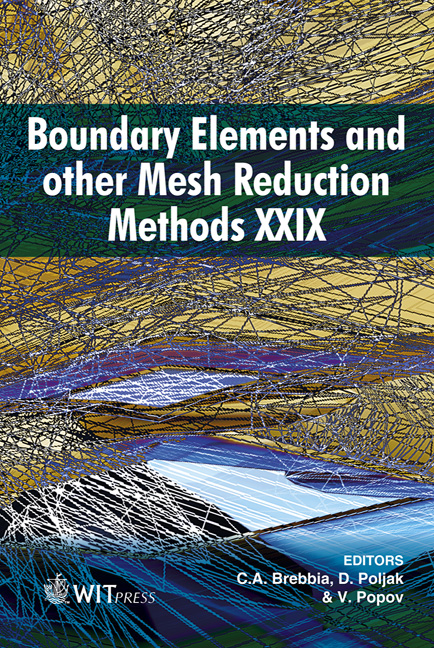Introduction Of STEM For Stress Analysis In Statically Determined Bodies
Price
Free (open access)
Transaction
Volume
44
Pages
10
Published
2007
Size
444 kb
Paper DOI
10.2495/BE070081
Copyright
WIT Press
Author(s)
A. N. Galybin
Abstract
This article presents a novel approach to the identification of stress states in statically determined bodies. The approach is based on the stress trajectory concept and therefore it is referred to as the stress trajectories element method, (STEM). Three different variants of STEM are presented and some problems associated with these are posed. Keywords: boundary value problems, stress trajectories, numerical methods. 1 Introduction This article is an introduction to a novel numerical method that is currently under development in Wessex Institute of Technology. The method is aimed at the identification of stresses in statically determined bodies by employing stress trajectories. The concept of stress trajectories comes from photoelasticity, therefore one can adopt the following definition due to Frocht [1]: Stress trajectories are curves the tangents to which represent the directions of one of the principal stresses at the points of tangency. A single stress trajectory is also called an isostatic or a line of principal stresses. Stresses at each point inside a continuous body represent a second-rank tensor which components satisfy differential equations of equilibrium, DEE, and certain constitutive equations. The latter is of theoretical and/or experimental nature, it is often called \“rheology”, however only statically determined bodies are considered in this paper. These constitute a broad class and some examples are found in engineering: − in elasticity, the laplacian applied to the first invariant of the stress tensor should vanish (if body forces are neglected);
Keywords
boundary value problems, stress trajectories, numerical methods.





